When it comes to our skincare routine, choosing the right cleanser is essential. Gel cleansers are popular for their effective cleaning properties, especially for those with oily or combination skin. They gently remove dirt, oil, and impurities without stripping our skin of essential moisture.

Table of Contents
Understanding how gel cleansers work can help us select the best option for our specific skin needs. These products often include ingredients that can provide a refreshing and rejuvenating cleanse. As we explore the different types and benefits of gel cleansers, we can make informed choices for healthier skin.
In this article, we will dive into the various aspects of gel cleansers, including their ingredients, how they differ from other cleansers, and tips for choosing the right one. By the end, we will be better equipped to improve our skincare routine and enjoy the benefits that gel cleansers have to offer.
What Are Gel Cleansers?
Gel cleansers are a popular facial cleanser known for their lightweight texture. They are water-based and typically have a gel-like consistency. This makes them easy to apply and rinse off, providing a refreshing feeling.
These cleansers are effective at removing dirt, oil, and makeup. They work well for oily and combination skin types because they can cut through excess sebum without stripping the skin of its natural oils.
Benefits of Cleansing Gel
- Effective Cleansing: They remove impurities and leave the skin feeling clean.
- Hydrating: Many gel cleansers mix moisturizing ingredients to maintain hydration.
- Lightweight: Their texture makes them suitable for daily use without feeling heavy on the skin.
Gel cleansers can also help reinforce the skin barrier. This means they support our skin in maintaining its natural protective layer. When used regularly, gel cleansers can leave our skin looking brighter and feeling softer.
Overall, gel cleansers are a versatile choice for many skin types. They are a great option for those who want a thorough cleanse without heavy creams or oils. For more information on how these products work, we can check out how gel cleansers work.
Deep Cleansing Action
One of the standout features of gel cleansers is their ability to offer a deep cleansing action. The gel formula penetrates the skin’s surface, helping to remove dirt, oil, and impurities.
These cleansers are often designed with cleansing agents that gather and lift away excess oil without stripping the skin of its natural moisture. The result is skin that feels fresh and clean without being overly dry.
Some gel cleansers contain exfoliating properties that help unclog pores, preventing breakouts and promoting a smoother complexion.
Acne-Fighting Properties
Gel cleansers are particularly effective for battling acne. Many products are formulated with active ingredients like salicylic acid, which targets the bacteria that contribute to acne formation.
These ingredients work to reduce inflammation and redness, providing a calming effect on the skin. We often find that regular use can lead to a noticeable reduction in breakouts.
Moreover, gel cleansers can help balance oil production, which is critical for anyone experiencing acne. Maintaining this balance prevents future blemishes and keeps the skin looking clear.
Cleansing Gel For Oily And Acne-Prone Skin
Gel cleansers are a top choice for those with oily and acne-prone skin due to their non-comedogenic properties. They do not clog pores, helping to prevent the buildup of dirt and bacteria that can cause breakouts.
The lightweight texture allows for quick absorption, which is ideal for those trying to manage excess oil throughout the day. Users often report feeling less greasy and more comfortable, even in humid conditions.
By choosing a gel cleanser specifically designed for oily skin, we can effectively manage acne without causing additional irritation or dryness.
Lightweight And Refreshing Feel
Another appealing benefit of gel cleansers is their lightweight and refreshing feel. Unlike cream-based cleansers, gel formulations provide an invigorating sensation during use.
This refreshing quality can be particularly pleasant, especially in the morning or after exercise. The gel texture glides smoothly over the skin and rinses off easily, leaving no residue behind.
We appreciate that gel cleansers often include soothing ingredients like aloe vera or cucumber extract, enhancing the cooling effect and providing hydration without heaviness. This makes them an excellent choice for daily use.
How Cleansing Gel Works for Different Skin Types
One of the strengths of gel cleansers is their versatility across various skin types. While commonly recommended for oily and acne-prone skin, the right formulation can work wonders for almost any skin type:
- Gel Cleansers for Oily Skin: These cleansers help to control excess sebum without causing dryness or irritation, leaving the skin clean but not overly tight.
- Gel Cleansers for Sensitive Skin: Formulated with fewer harsh chemicals, these cleansers often contain calming ingredients that soothe redness and irritation, making them a safe option for those with sensitive or reactive skin.
- Gel Cleansers for Combination Skin: Balancing the needs of both dry and oily areas, gel cleansers work well for those with combination skin by offering thorough cleansing without exacerbating oiliness or causing dryness in certain areas.
Common Mistakes to Avoid
Even though gel cleansers are generally straightforward to use, certain missteps can reduce their effectiveness or cause irritation. Here are common mistakes to avoid:
- Over-Cleansing: Washing your face too frequently, even with a gentle gel cleanser, can strip the skin of its natural oils, leading to dryness and irritation. Stick to cleansing twice a day—morning and night.
- Using the Wrong Cleanser for Your Skin Type: Not all gel cleansers are created equal. Using a cleanser that’s too harsh for sensitive or dry skin can cause discomfort. Likewise, those with oily skin should avoid overly hydrating formulas that can clog pores.
- Skipping Makeup Removal: While gel cleansers are excellent for deep cleansing, they may not remove all traces of makeup, especially waterproof products. Always use a makeup remover or cleansing oil before washing your face with a gel cleanser.
Are Gel Cleanser Safe for Daily Use?
Yes, gel cleansers are generally safe for daily use, especially when formulated for your skin type. Most dermatologists recommend using a cleanser twice daily: once in the morning to refresh your skin and once at night to remove dirt and oil buildup. However, those with particularly sensitive or dry skin may benefit from using a gel cleanser only once a day to avoid over-cleansing.
Dermatologists’ Opinions on Frequent Use
Many dermatologists agree that gel cleansers are one of the gentler types of cleansers, which makes them suitable for daily use. They emphasize the importance of choosing a formulation that matches your skin type to avoid irritation. If you’re using a gel cleanser with active ingredients like salicylic acid, it’s wise to consult a dermatologist, especially if you’re unsure how often to use it.
Gel Cleansers for Men: Do They Work?
Men’s skincare needs are often different from women’s, primarily due to differences in skin thickness, facial hair, and oil production. Gel cleansers are an excellent option for men, particularly for those with oily or acne-prone skin. The lightweight, refreshing nature of gel cleansers appeals to men who prefer products that are easy to use and won’t leave a greasy residue.
Benefits for Men’s Skin Types
- Oily Skin: Men tend to have larger pores and produce more sebum, making gel cleansers ideal for controlling oil without over-drying.
- Sensitive Skin from Shaving: Men who shave regularly can benefit from the soothing and hydrating ingredients often found in gel cleansers, which help reduce razor burn and irritation.
Key Ingredients To Look For In Gel Cleanser
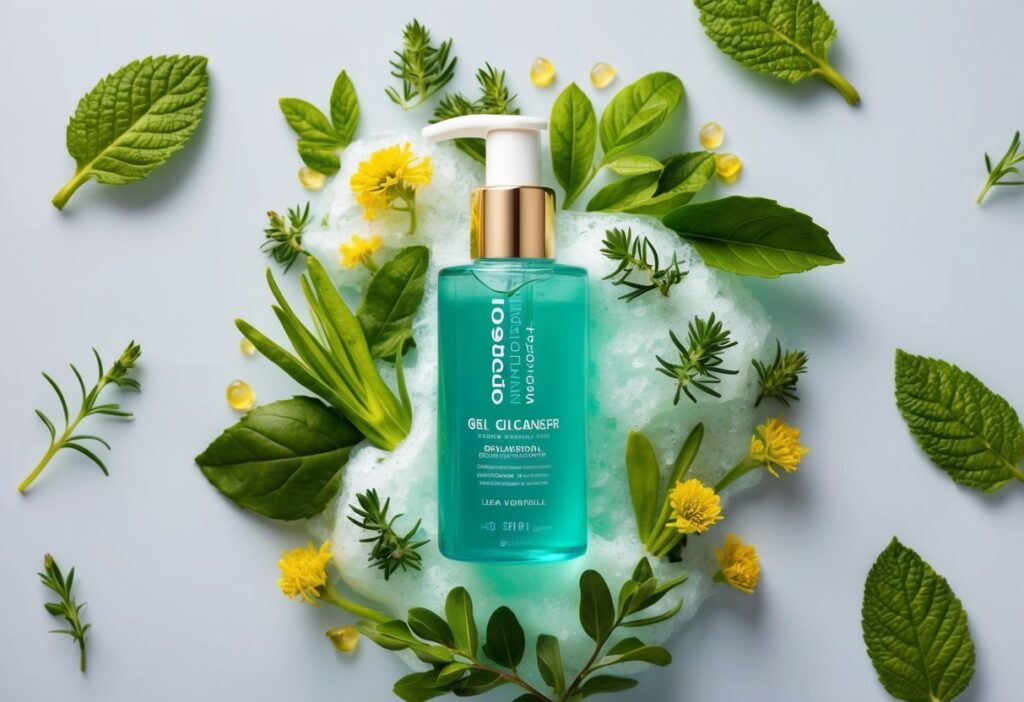
Salicylic Acid
Salicylic acid is a strong ingredient known for its ability to penetrate pores. It helps to dissolve excess oil and exfoliate dead skin cells. This makes it particularly beneficial for those with oily or acne-prone skin.
By keeping pores clear, it reduces the likelihood of breakouts. When choosing a gel cleanser, look for a concentration of 0.5% to 2% salicylic acid to achieve optimal results.
Tea Tree Oil
Tea tree oil is another powerful ingredient known for its antibacterial properties. It helps fight acne-causing bacteria and can soothe irritated skin.
In gel cleansers, tea tree oil can provide a refreshing feel and help reduce redness. It’s great for those with sensitive skin who still want effective treatment. We should check the product label for natural oil to avoid synthetic alternatives.
Glycerin
Glycerin is a humectant that draws moisture into the skin. Unlike some other cleansers that may strip the skin of its natural oils, glycerin helps maintain hydration.
This is especially important for those with dry or combination skin. Gel cleansers containing glycerin can cleanse while also preventing a tight or dry feeling after use. We should prioritize products that list glycerin high on the ingredient list.
Aloe Vera
Aloe vera is celebrated for its soothing properties. It provides hydration and helps calm irritation, making it perfect for sensitive or inflamed skin.
In gel cleansers, aloe vera helps to create a gentle formula that cleans without harsh effects. When selecting a gel cleanser, we should look for apple juice or whole-leaf aloe vera as primary ingredients for maximum benefits.
pH-Balancing Ingredients
pH-balancing ingredients are essential for maintaining our skin’s natural barrier. A balanced pH level (around 5.5) can prevent over-drying and irritation.
We should look for gel cleansers that mention pH balance on the label. Ingredients like citric acid or sodium bicarbonate can help achieve this. Choosing a pH-balanced cleanser ensures efficient cleansing without disrupting our skin’s microbiome.
How To Use Gel Cleansers Effectively
Using gel cleansers correctly is important for achieving clear and healthy skin. We need to focus on application techniques, how often to use them, and how to fit them into our overall skincare routine to get the best results.
How to add gel cleanser to Your Skincare Routine
Gel cleansers are usually the first step in our skincare routine. After cleansing, we should follow up with a toner, serum, and moisturizer for the best results.
If we wear makeup, it’s a good idea to remove that first with a makeup remover or micellar water. Then we can use the gel cleanser to ensure our skin is thoroughly clean. Regular exfoliation, about 1-2 times a week, can also help improve our skin’s texture and clarity when used alongside our cleansing routine.
How to Properly use a gel cleanser?
Steps to Use a Gel Cleanser Effectively:
#Step – 1. Pat Dry: Gently pat your face dry with a clean towel. Avoid rubbing to prevent irritation.
#Step – 2. Wet Your Face: Start by splashing your face with warm water to open up your pores for deeper cleansing.
#Step – 3. Apply Gel Cleanser: Dispense a small amount of gel (about the size of a quarter) onto your fingertips.
#Step – 4. Massage Gently: In small, circular motions, gently massage the gel onto your face, paying extra attention to the T-zone (forehead, nose, and chin).
#Step – 5. Avoid Scrubbing: Be gentle while massaging to prevent irritation. Avoid harsh scrubbing.
#Step – 6. Rinse Thoroughly: After about 30 seconds, rinse your face with lukewarm water, making sure all the cleanser is removed.

Gel Cleanser vs Other Types of Cleansers
Gel Vs. Foaming Cleansers
Both gel and foaming cleansers offer a deep cleanse, but they differ in texture and function. Foaming cleansers usually create a rich lather when mixed with water. This makes them great for oily skin as they can remove excess oil and impurities effectively.
On the other hand, gel cleansers are often less bubbly and gentler on the skin. They can hydrate while still cleansing, making them suitable for a broader range of skin types, including sensitive skin.
If we experience irritation easily, gel cleansers could be a safer option. In contrast, foaming cleansers may leave the skin feeling tight, which is not ideal for dry skin types.
Also Read:- Foaming Cleansers: Benefits, Tips, and Top Picks for Every Skin Type
Gel Vs. Cream Cleansers
Cream cleansers are thicker in consistency and often contain moisturizing ingredients. This makes them ideal for dry or sensitive skin. They hydrate while cleansing, which helps maintain the skin’s natural barrier.
In comparison, gel cleansers are lightweight and often oil-free. They are effective for balancing oil on the skin, making them popular for a combination or oily skin type. However, they may not provide the same level of hydration as cream cleansers.
For those who find their skin gets dry or irritated easily, cream cleansers may be better for daily use. Gel cleansers can still provide effective cleansing without the added moisture.
Gel Vs. Oil Cleansers
Oil cleansers are designed to dissolve makeup and remove impurities using oils. They are particularly effective for heavy make-up or waterproof products. However, they can leave an oily residue if not rinsed thoroughly.
Gel cleansers, in contrast, wash away without leaving any residue. They provide a refreshing clean that many of us prefer for daily skincare routines. Additionally, gel cleansers are often lighter and offer a cooling effect during application.
For those of us who wear minimal makeup or prefer lighter formulations, gel cleansers are a great choice. Those who use a lot of makeup might consider combining oil and gel cleansers for a complete cleansing routine.
Top Recommended Gel Cleansers on the Market
Choosing the right gel cleanser is important for maintaining healthy skin. Different skin types require specific formulations. Here, we present recommendations tailored to three common skin types: oily, acne-prone, and combination.
Top Gel Cleansers for Oily Skin
For those of us with oily skin, gel cleansers that balance oil production while keeping skin fresh are essential. We recommend the La Roche-Posay Effaclar Medicated Gel Facial Cleanser.
- Active Ingredients: Contains 2% salicylic acid and lipo-hydroxy acid to unclog pores.
- Benefits: Effectively reduces shine and prevents breakouts without over-drying.
- Usage: Use twice daily for best results.
Another strong option is the Neutrogena Hydro Boost Hydrating Cleansing Gel, ideal for maintaining moisture while cleansing.
Top Gel Cleansers for Acne-Prone Skin
When dealing with acne-prone skin, gel cleansers with antibacterial properties can help. The Herbivore Botanicals Pink Cloud Rosewater + Tremella Creamy Jelly Cleanser stands out for its ability to remove makeup and impurities effectively.
- Key Feature: Gentle formula that is hydrating and non-irritating.
- Suitable For: Great for keeping skin clear without harsh ingredients.
We also suggest the House 99 Perfectly Clean Face Wash, which helps in reducing blemishes while providing hydration.
Top Gel Cleansers for Combination Skin
Combination skin requires a delicate balance of cleansing without irritation. The Peach and Lily Power Calm Hydrating Gel Cleanser is a top pick.
- Functionality: It lathers into a soft foam, providing light exfoliation.
- Benefits: Hydrates dry areas while treating oily zones effectively.
- Active Ingredients: Features soothing agents that calm the skin.
Additionally, the Neutrogena Hydro Boost Hydrating Cleansing Gel is versatile and maintains moisture for both dry and oily areas.
Conclusion
When we think about skincare, gel cleansers are an essential part of our routine. They help remove dirt, oil, and makeup without stripping the skin.
Here are some key benefits of gel cleansers:
- Removes Impurities: Gel cleansers effectively eliminate dirt and oil that build up throughout the day.
- Suitable for Oily Skin: They are often ideal for those with oily or acne-prone skin.
- Gentle Formula: Most gel cleansers are designed to be gentle, making them suitable for daily use.
To get the best results, we recommend using a gel cleanser morning and night.
It’s important to:
- Wet the skin with lukewarm water.
- Use a small amount of gel cleanser and lather it in your hands.
- Apply it to the face in a gentle circular motion.
Choosing the right gel cleanser can make a big difference in our skin’s health. We should look for ingredients that cater to our specific skin needs.
Using gel cleansers regularly can lead to clearer, more radiant skin. By adding this step into our skincare routine, we can achieve a fresh, clean complexion.
FAQs
- Can gel cleanser remove makeup effectively?
Gel cleansers can remove light makeup, but for heavier or waterproof makeup, it’s recommended to use a makeup remover or cleansing oil first. - Are gel cleansers suitable for dry skin?
While gel cleansers are often marketed to those with oily or combination skin, some are formulated with hydrating ingredients like glycerin or hyaluronic acid, making them suitable for dry skin. - How often should I use a gel cleanser?
Ideally, you should use a gel cleanser twice a day—once in the morning and once at night. However, those with sensitive or dry skin may benefit from cleansing only once a day. - Can I use a gel cleanser with other skincare products?
Yes, gel cleansers can be easily incorporated into most skincare routines. After cleansing, follow up with a toner, serum, and moisturizer. - Do gel cleansers help with acne?
Yes, many gel cleansers contain active ingredients like salicylic acid that help unclog pores and reduce acne. - Should I avoid gel cleansers if I have sensitive skin?
Not necessarily. Some gel cleansers are formulated specifically for sensitive skin with soothing ingredients like aloe vera or chamomile. Be sure to check the label for any potential irritants.




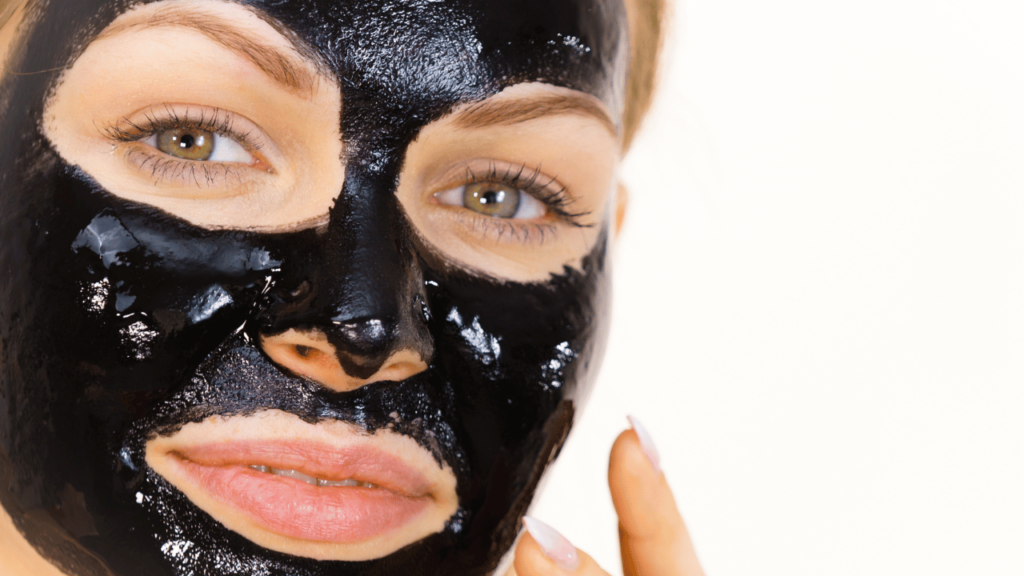
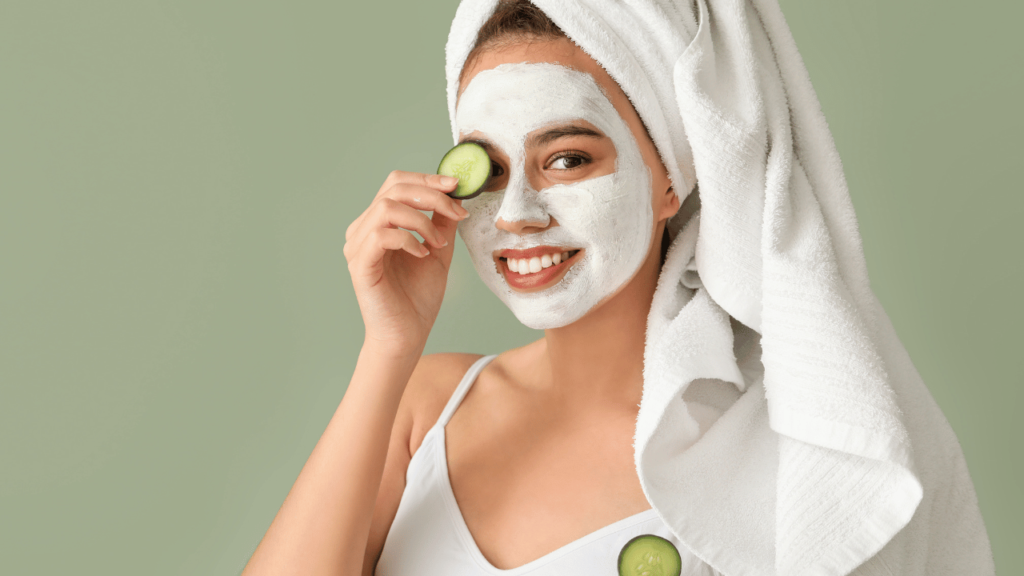

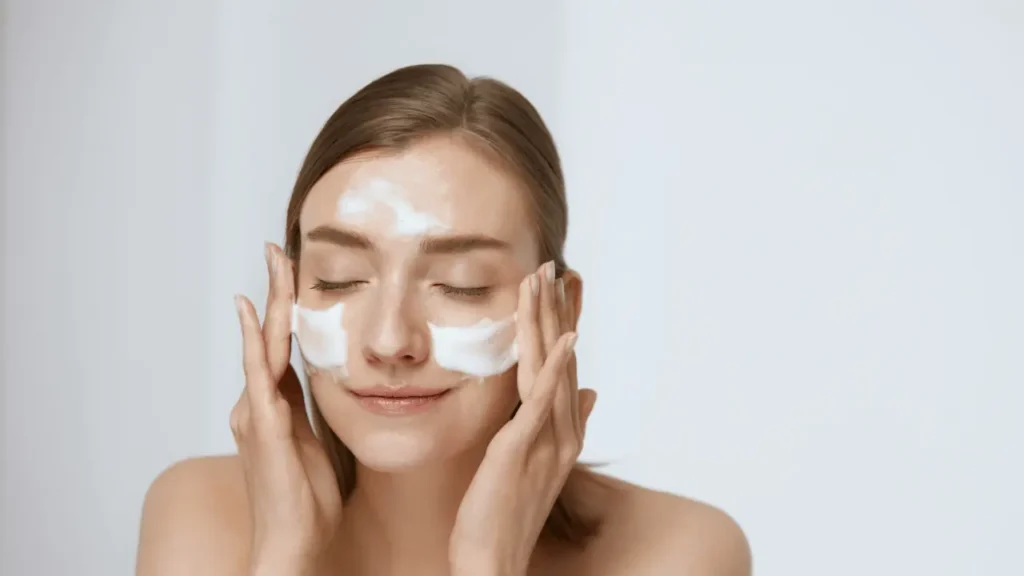
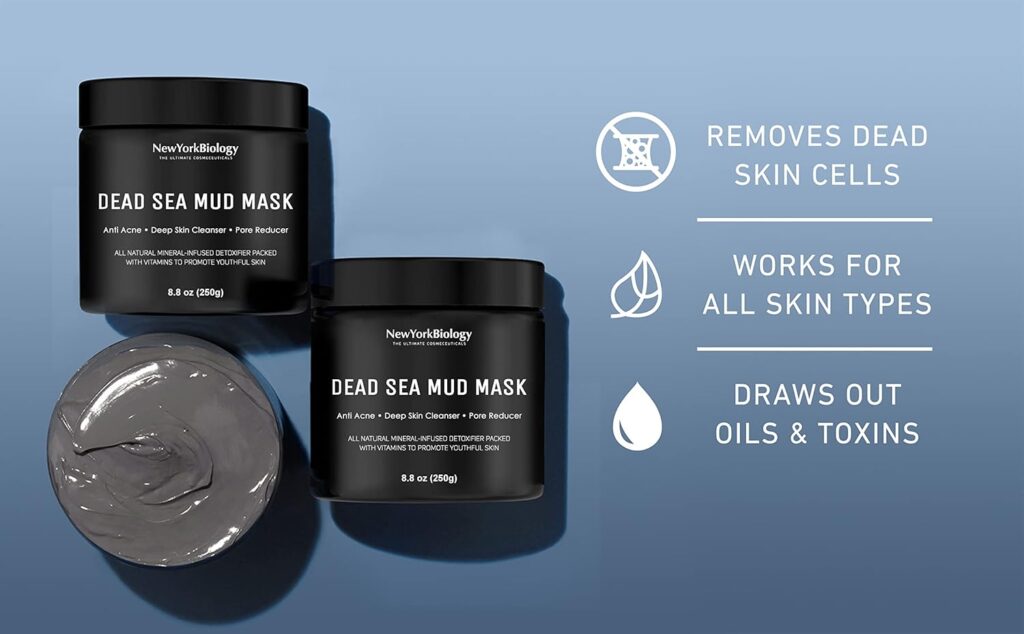
Pingback: Best Types of Facial Cleansers and Their Benefits for Different Skin Types - Productsforme
Pingback: Foaming Cleansers: Benefits, Tips, and Top Picks for Every Skin Type
Pingback: Cream Cleansers: The Ultimate Gentle Solution for Fresh, Hydrated Skin
Pingback: Anua Cleanser vs COSRX Cleanser: Which K-Beauty Cleanser is Best for you?
Pingback: The Ultimate Guide to Facial Cleansers: Types, Benefits, and How to Choose the Best One
Pingback: How to Choose the Best Cleanser for Oily Skin?
Pingback: The Secret to Choosing Best Cleanser for Dry Skin